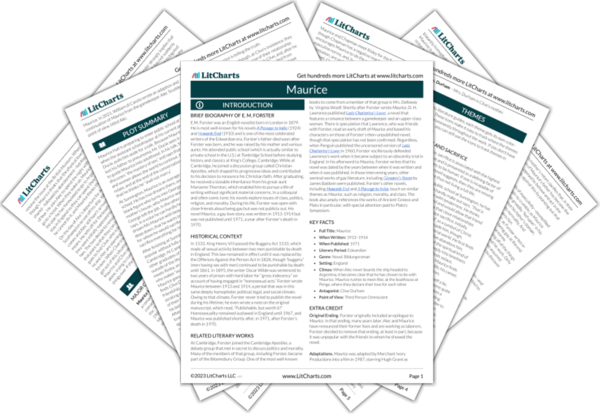Next
Summary
Maurice Study Guide |
Next
Summary
|
Welcome to the LitCharts study guide on E. M. Forster's Maurice. Created by the original team behind SparkNotes, LitCharts are the world's best literature guides.

Original Ending. Forster originally included an epilogue to Maurice. In that ending, many years later, Alec and Maurice have renounced their former lives and are working as laborers. Forster decided to remove that ending, at least in part, because it was unpopular with the friends to whom he showed the novel.
Adaptations. Maurice was adapted by Merchant Ivory Productions into a film in 1987, starring James Wilby and Hugh Grant. In 2021, William di Canzio wrote an adaption and continuation of Maurice from the gamekeeper Alec Scudder’s point of view, titled Alec.